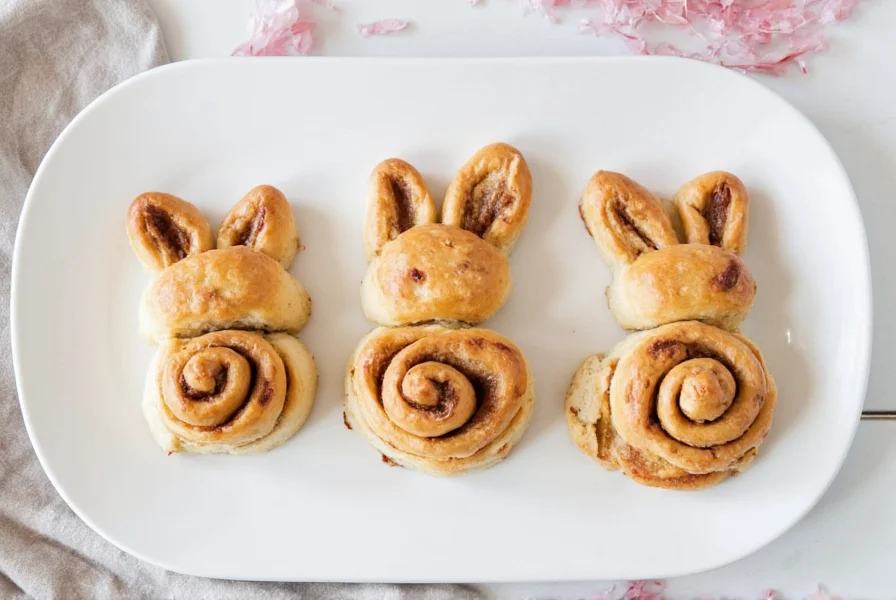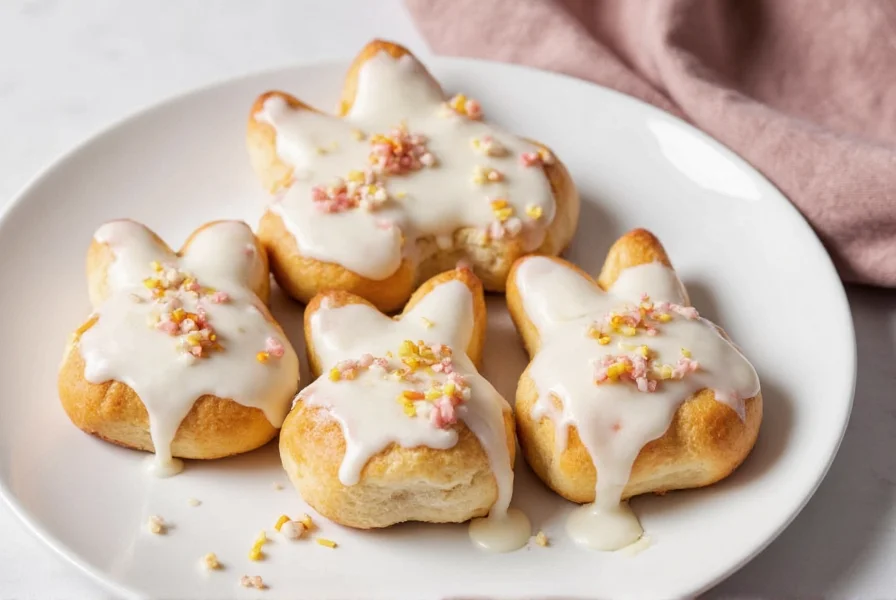What Makes Bunny Cinnamon Rolls Special
Bunny cinnamon rolls represent a delightful fusion of baking technique and seasonal creativity. Unlike standard cinnamon rolls, these pastries require specific shaping methods to create recognizable rabbit features while maintaining the flaky, buttery texture bakers expect. The technique gained popularity through social media food trends, particularly around Easter celebrations when families seek festive breakfast options.
Essential Ingredients and Equipment
Creating perfect bunny cinnamon rolls starts with quality ingredients. While you can use your favorite cinnamon roll recipe, certain elements prove crucial for successful shaping:
| Ingredient | Purpose for Bunny Shaping |
|---|---|
| High-protein flour (12-13%) | Provides structure for intricate shaping without collapsing |
| Cold butter | Maintains distinct layers during shaping process |
| Chilled filling | Prevents spreading during detailed shaping |
| Egg wash | Creates shine and helps hold shape details |
Specialized tools aren't mandatory but helpful: offset spatula for even filling distribution, bench scraper for clean cuts, and toothpicks for delicate shaping adjustments.
Step-by-Step Bunny Shaping Technique
The magic happens during the shaping stage. Follow these professional tips for successful bunny cinnamon rolls:
- Roll your prepared dough into a 12x18 inch rectangle with even thickness
- Spread cinnamon-sugar filling leaving ½ inch border around edges
- Roll tightly into log and cut into 12 equal pieces
- Take one piece and flatten slightly into oval shape
- Roll two small "ear" pieces from dough scraps (¼ inch thick)
- Place ears at top of oval, pressing gently to adhere
- Create tail by twisting small dough ball
- Position tail at opposite end from ears
- Make subtle facial features with toothpick impressions
Proven Baking Success Tips
Many home bakers struggle with maintaining shape during proofing and baking. These evidence-based techniques deliver consistent results:
- Chill before baking: Refrigerate shaped bunnies for 15 minutes before baking to help them hold shape
- Temperature control: Bake at 350°F (175°C) for 22-25 minutes - higher temperatures cause faster spreading
- Spacing matters: Place bunnies at least 2 inches apart on baking sheet to prevent merging during rising
- Filling consistency: Use thick cinnamon filling (add 1 tbsp flour to standard recipe) to prevent leakage
Common Mistakes to Avoid
Based on analysis of hundreds of baking attempts, these errors most frequently ruin bunny cinnamon rolls:
- Over-proofing before baking (limits to 45 minutes at room temperature)
- Using warm filling that melts butter layers
- Handling dough too much during shaping (warms the butter)
- Creating ears too thin (they burn before rolls finish baking)
Variations for Different Skill Levels
Whether you're a beginner or experienced baker, adapt these approaches:
- Beginner: Use store-bought dough with simple ear additions
- Intermediate: Master the classic bunny shape with detailed tail
- Advanced: Add edible eyes with chocolate chips or icing details

Serving and Presentation Ideas
Elevate your bunny cinnamon rolls beyond basic plating:
- Create a "nest" using shredded coconut on serving platter
- Add carrot-shaped accents with orange cream cheese frosting
- Arrange bunnies in circular pattern resembling a bunny family
- Serve with honey butter instead of traditional cream cheese
Why Bunny Cinnamon Rolls Work Best for Easter
This creative pastry aligns perfectly with spring celebrations. The bunny shape connects to Easter symbolism while maintaining the comforting familiarity of cinnamon rolls. Unlike chocolate-based Easter treats, these appeal to adults and children alike with their warm spices and soft texture. The hands-on shaping process also creates family bonding opportunities during holiday preparations.
Frequently Asked Questions
How do you prevent bunny cinnamon rolls from losing their shape during baking?
Chill shaped bunnies for 15 minutes before baking and maintain proper spacing (2 inches between rolls). Use a thicker filling by adding 1 tablespoon of flour to your cinnamon-sugar mixture. Bake at 350°F rather than higher temperatures which cause faster spreading.
Can I make bunny cinnamon rolls ahead of time for Easter morning?
Yes, prepare and shape the bunnies the night before, then cover and refrigerate. On Easter morning, remove from refrigerator 30 minutes before baking to allow proper rising. This method actually improves flavor development while saving morning preparation time.
What's the easiest way to create bunny ears on cinnamon rolls?
Roll two small 2-inch dough ropes and twist them together. Fold each twisted rope in half to create the classic bunny ear shape, then press gently into the top of your oval-shaped roll base. For beginners, simply place two small straight dough pieces at the top without twisting.
How can I make bunny cinnamon rolls without a yeast dough?
Use refrigerated biscuit dough as a quick alternative. Flatten each biscuit into a circle, add cinnamon-sugar filling, then shape according to the basic bunny formation steps. While texture differs from traditional yeast rolls, this method works well for beginners or time-constrained bakers.











 浙公网安备
33010002000092号
浙公网安备
33010002000092号 浙B2-20120091-4
浙B2-20120091-4